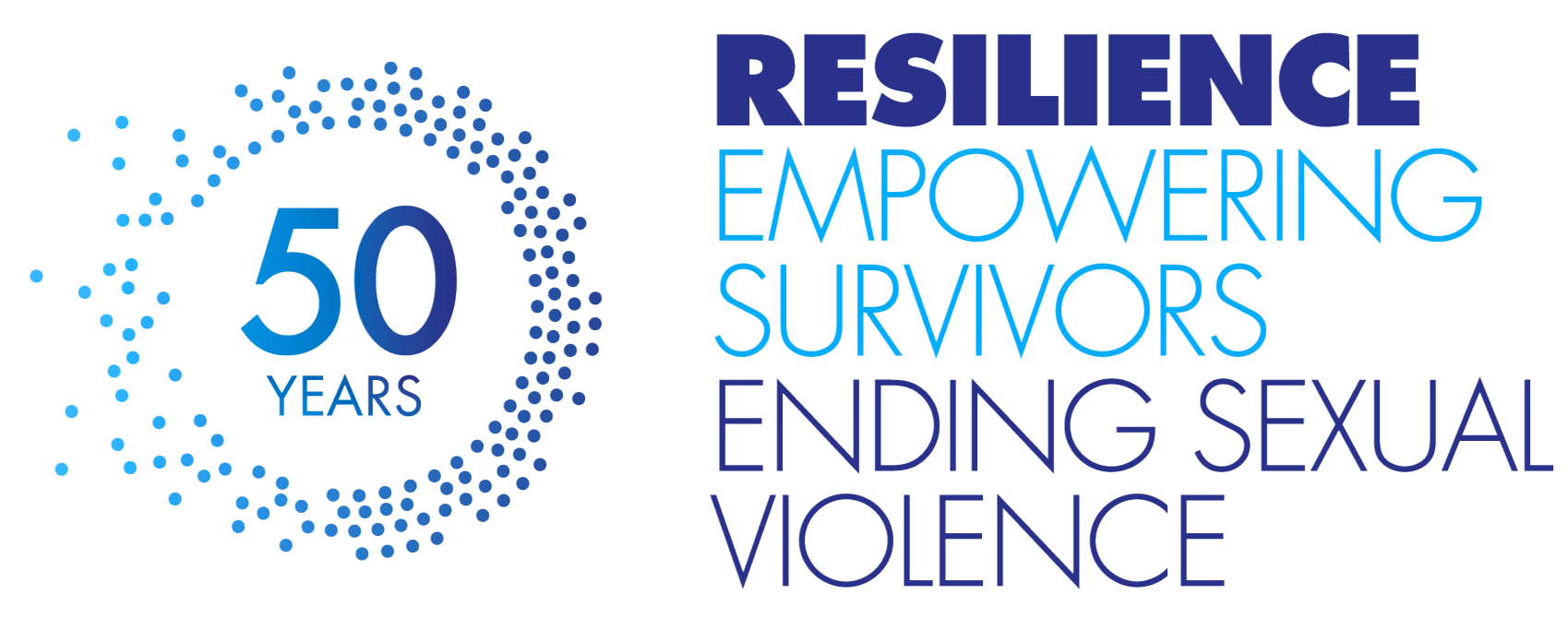Sexual Violence Myths & Facts
There is a lot of information that circulates about sexual violence and the people affected by it. The following myths are common and can impact survivors of assault or abuse, as well as the behavior and effectiveness of friends, family, medical, social service and law enforcement personnel. This sheet will help clarify some of the most common myths.
Myth: Sexual assault is an act of lust and passion that can’t be controlled.
Fact: Sexual assault is about power and control and is not motivated by sexual gratification.[1]
Myth: If a victim of sexual assault does not fight back, they must have thought the assault was not that bad or they wanted it.
Fact: Many survivors experience tonic immobility or a “freeze response” during an assault where they physically cannot move or speak.[2]
Myth: A lot of victims lie about being raped or give false reports.
Fact: Only 2-8% of rapes are falsely reported, the same percentage as for other felonies.[3]
Myth: A person cannot sexually assault their partner or spouse.
Fact: Nearly 1 in 10 women have experienced rape by an intimate partner in their lifetime.[4]
Myth: Sexual assaults most often occur in public or outdoors.
Fact: 55% of rape or sexual assault victimizations occur at or near the victim’s home, and 12% occur at or near the home of a friend, relative, or acquaintance.[5]
Myth: Rape does not happen that often.
Fact: There is an average of 293,066 victims ages 12 or older of rape and sexual assault each year in the U.S. This means 1 sexual assault occurs every 107 seconds.[6]
Myth: People that have been sexually assaulted will be hysterical and crying.
Fact: Everyone responds differently to trauma- some may laugh, some may cry, and others will not show any emotions.[7]
Myth: Men are not victims of sexual violence.
Fact: 1.5% of all men have been raped and 47% of bisexual men have experienced some form of unwanted sexual contact in their lifetime.4
Myth: Wearing revealing clothing, behaving provocatively, or drinking a lot means the victim was “asking for it”.
Fact: The perpetrator selects the victim- the victim’s behavior or clothing choices do not mean that they are consenting to sexual activity.[8]
Myth: If a parent teaches a child to stay away from strangers they won’t get raped.
Fact: 60% of child sexual abuse cases are perpetrated by someone the child knows outside the family, and 30% are assaulted by family members.[9]
Myth: Being sexually assaulted by someone of the same gender can make a person gay or lesbian.
Fact: The assault is typically not based on the sexual preferences of the victim or rapist, and therefore does not necessarily change the victim’s sexual orientation.[10]
Myth: People with disabilities are at low risk for sexual assault.
Fact: People with disabilities are victims of sexual assault twice as much as people without disabilities.6
Myth: Sex workers cannot be raped because they are selling sex.
Fact: Sex workers have the right to give and withhold consent to any sexual activity, and therefore, can be raped just like anyone else.[11]
Myth: Getting help is expensive for survivors of assault.
Fact: Services such as counseling and advocacy are offered for free or at a low cost by sexual assault service providers.[12]
Myth: There is nothing we can do to prevent sexual violence.
Fact: There are many ways you can help prevent sexual violence including intervening as a bystander to protect someone who may be at risk.[13]
[1] Groth, A., Burgess, W., & Holmstrom, L. Rape: Power, anger, and sexuality. American Journal of Psychiatry, 134(11), 1239-43. Pubmed.gov.
[2] TeBockhorst, S., O’Halloran, M., & Nyline, B. (2014). Tonic Immobility Among Survivors of Sexual Assault. Psychological Trauma: Theory, Research, Practice, and Policy, 7(2). 171-178
[3] Lonsway, K., Archambault, J., & Lisak, D. (2009). False Reports: Moving Beyond the Issue to Successfully Investigate and Prosecute NonStranger Sexual Assault. The Voice, 3(1).
[4] Centers for Disease Control and Prevention. National Intimate Partner and Sexual Violence Survey. (2011).
[5] Planty, M., Langton, L., Krebs, C., Berzofsky, M., & Smiley-McDonald, H. (2013). Female Victims of Sexual Violence, 1994-2010. Bureau of Justice Statistics.
[6] U.S. Department of Justice. National Crime Victimization Survey. 2009-2013.
[7] Fanflik, P. (2007). Victim Responses to Sexual Assault: Counterintuitive or Simply Adaptive?
[8] The National Child Traumatic Stress Network: The Truth About Sexual Abuse
[9] US Department of Justice: Facts and Statistics
[11] Sullivan, B. (2007). Rape, Prostitution, and Consent. Australian & New Zealand Journal of Criminology (Australian Academic Press), 40(2), 127-142.
[12] RAINN: Find Help Near You
[13] RAINN: Your Role in Preventing Sexual Assault
